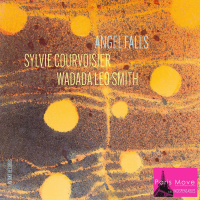Home » Jazz Articles » Book Review » Reading Jazz
Reading Jazz
 Edited by Robert Gottlieb Pantheon, 1997 0865474907
Edited by Robert Gottlieb Pantheon, 1997 0865474907
Reading Jazz looks daunting in its doorstop heft. "Autobiography, Reportage and Criticism" — 1068 pages of it. But don't be frightened off.
Certainly not meant for consumption in one long-haul read, this is a collection designed to be pulled out occasionally and thumbed through. It's a perfect companion to a favorite jazz record you slip into the CD player or plop onto the turntable every so often.
Former New Yorker editor Gottlieb has a loving touch. He's pulled together fine writing from a variety of sources: choice selections from jazz artists' memoirs, long-forgotten magazine articles, and collections of music criticism. And he's arranged it with great imagination.
Divided into the three categories of its subtitle, "Reading Jazz" begins with selections from musician autobiographies. Gottlieb has arranged these snippets chronologically, so at the same time they provide revealing self-portraits of each artist, they collectively tell the story of jazz. The book begins in New Orleans with Jelly Roll Morton and Sidney Bechet, and picks up steam with Louis Armstrong's train journey to Chicago, where he joined his Crescent City mentor King Oliver in spreading jazz to the rest of the country.
In fact, the book provides not just one, but two versions of Armstrong's trip, both told by Pops himself. The details in the two selections differ, highlighting the tall-tale quality not just of Armstrong's character, but of jazz history itself. Jazz is a music built on myths and legends and, in selections such as these, Gottlieb lets it play.
Later on in the book, Gottlieb shares an excerpt from John Hammond's autobiography in which the record producer recounts his first meeting with Count Basie, and then follows it with Basie's account of the same event. Again, not all the details match up, but that's half the fun.
There are a lot of wonderful moments recounted in this first section of the book. For example, here's trumpeter Buck Clayton sharing this defining moment: "The first time I heard Louis [Armstrong] play was on a recording coming out of a shop window as I was walking down Central Avenue. I just stopped still and stood listening to that golden tone. I had never heard anyone play with such soul."
There's a lot of wonderful language, too. Here's Dixieland guitarist Eddie Condon recounting a high-class party gig: "The eastern seaboard must have been drained of blue blood for the Briganza party. Every name was a foot long; I was surprised that anyone ate with his own hands. The affair was held in the country club; the only things there were champagne, caviar, and musicians. Even the servants were pedigreed."
And here's clarinetist / saxophonist Mezz Mezzrow on trumpeter Bix Beiderbecke: "Bix had the most perfect instincts of all. He was born with harmony in his soul, and chords instead of corpuscles."
All of jazz is here. Along with the figures already mentioned, there are self-portraits and critical analyses of everyone from Duke Ellington to Anthony Braxton. All the controversies — the role of race; the rise of fusion; tradition versus the avant-garde — are further examined.
Additional highlights include critic Leonard Feather's "Goffin, Esquire, and the Moldy Figs" and saxophonist Paul Desmond's "How Many of You Are There in the Quartet?". In his piece, Feather humorously recounts the "jazz wars" of the 1940s, in which the modernist champions of bebop found themselves at odds with the traditionalist defenders of Dixieland. While in his entry, Desmond reveals himself as the James Thurber of jazz, slyly recalling a gig from hell in which the Dave Brubeck Quartet found itself playing opposite a horse show at the Orange County State Fair.
Obviously, there's a lot here. Like that old favorite album, Reading Jazz is a treasure that will provide rewards for years to come.
Tags
PREVIOUS / NEXT
Support All About Jazz
 All About Jazz has been a pillar of jazz since 1995, championing it as an art form and, more importantly, supporting the musicians who make it. Our enduring commitment has made "AAJ" one of the most culturally important websites of its kind, read by hundreds of thousands of fans, musicians and industry figures every month.
All About Jazz has been a pillar of jazz since 1995, championing it as an art form and, more importantly, supporting the musicians who make it. Our enduring commitment has made "AAJ" one of the most culturally important websites of its kind, read by hundreds of thousands of fans, musicians and industry figures every month.



















